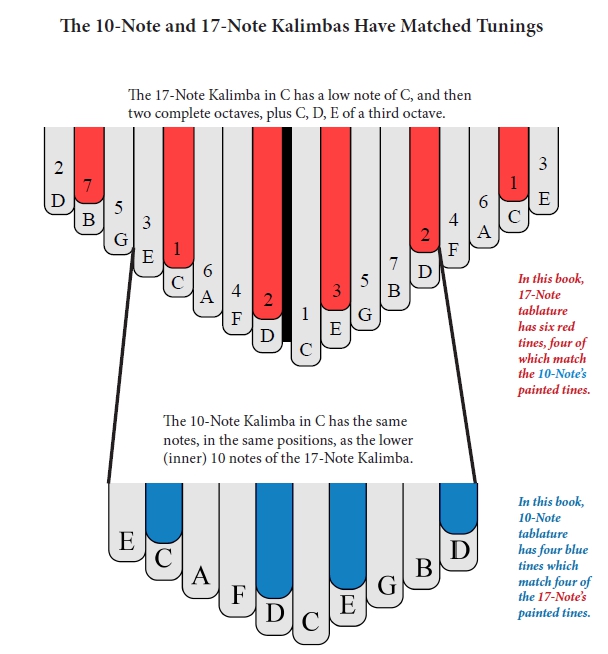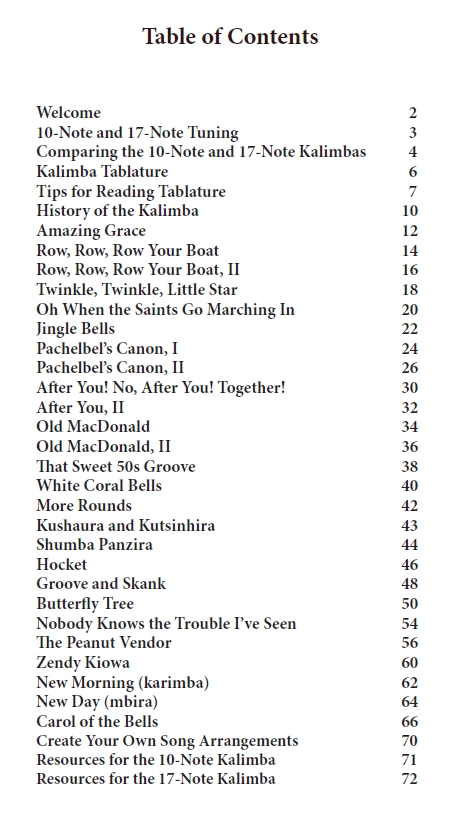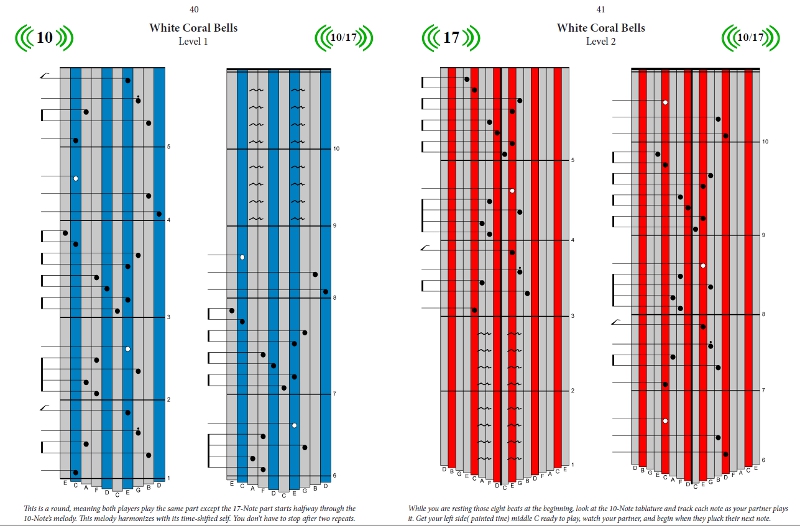Now is a chance for many people around the world to do some home-schooling. Kids are loving the time and parental attention combined with the freedom of being home instead of at school. What a great time to do kalimba with them!
This is an opportunity for precious one-on-one time with your kids… or with your parents! This is a time to make something beautiful together.
And I can recommend two kalimbas (see the image above) that go great together, and they come with an ebook of duets written just for them!
“I can tell you first hand: if you have to be cooped up with the same person, or people, for weeks on end, it will go much better if you are all playing music. Shared music can keep love alive, and musical fun can keep you enjoying each others’ company.”
It seems as if everyone is looking for a 17-Note kalimba these days. But 17 notes can be initially overwhelming. Especially for beginners or kids.
My rough “rule of thumb” is that a child’s kalimba should have one tine for every year of age. Start with an 8-Note kalimba for an 8 year old, or a 10-Note kalimba for a 10 year old. This is not an exact rule – that is, a 10-note kalimba might be a good place to start for children ages 6-12. On the other hand, I know the 10-note kalimba is a good starting place for many adults who lack musical experience or confidence, while a well-coordinated musically enthusiastic 13 year old should do just fine with a 17-note kalimba.
If there are two players, and one is less musically experienced and one is more musically experienced, the 10-Note and 17-Note kalimbas are a great pair. And to make that pairing of kalimbas just a bit sweeter, I am happy to offer you an interesting ebook (PDF) of duets for the 10-Note and the 17-Note kalimbas.
This ebook now comes for free when you purchase the 10-Note and 17-Note deal.
In order to make full use of this book of duets, you need a 10-Note and a 17-Note kalimba, tuned in the key of C as illustrated below.

The Table of Contents of the Duets book shows you exactly what songs and resources are included:
 The Duets book download PDF is organized in “spreads” – ie, two pages at once, which allows both players to see their part at the same time – the left-side page shows the 10-Note kalimba tablature in blue, and the right-side page shows the 17-Note kalimba tablature in red. You can see your own part, and also each others’ parts, which can be very helpful when playing duets.
The Duets book download PDF is organized in “spreads” – ie, two pages at once, which allows both players to see their part at the same time – the left-side page shows the 10-Note kalimba tablature in blue, and the right-side page shows the 17-Note kalimba tablature in red. You can see your own part, and also each others’ parts, which can be very helpful when playing duets.

There are three different sound icons on these pages – the one with “10” in between the green sound waves will download the sound file for the 10-Note kalimba, the one with the “17” will download the sound file for the 17-Note kalimba, and the icons with “10/17” will download the sound file that has both kalimbas playing at once.
There are a lot of songs in the Duets collection that are not instantly recognizable. In the video below is “Butterfly Tree,” one of the songs that you don’t know yet – and, as you can see and hear, it fits great on these kalimbas.


Sign up for our newsletter and free resources with your email address:
We pinky promise not to spam you and to only send good stuff.
 Christmas in July 2025
Christmas in July 2025 Patriotic and American Music for Kalimba
Patriotic and American Music for Kalimba